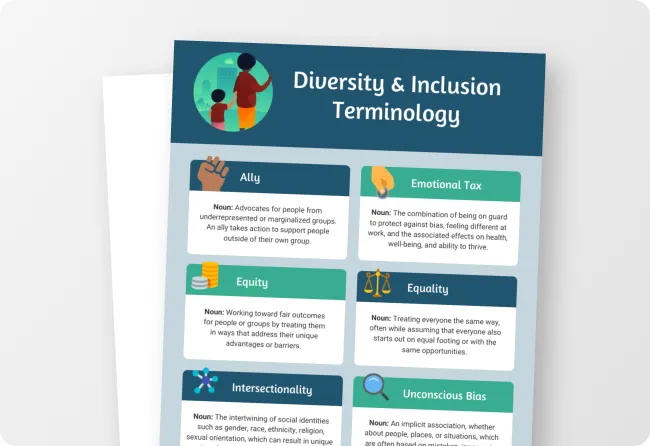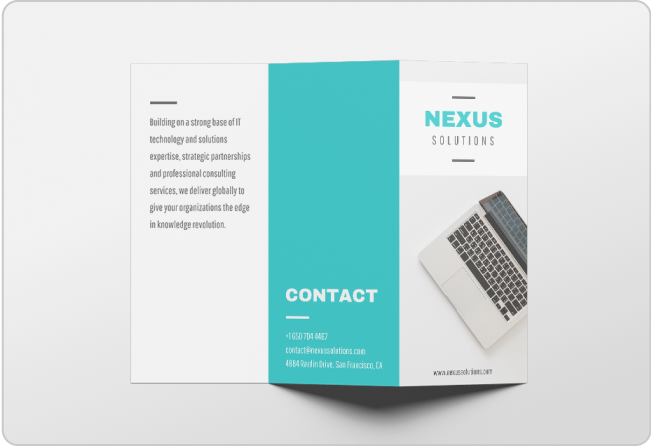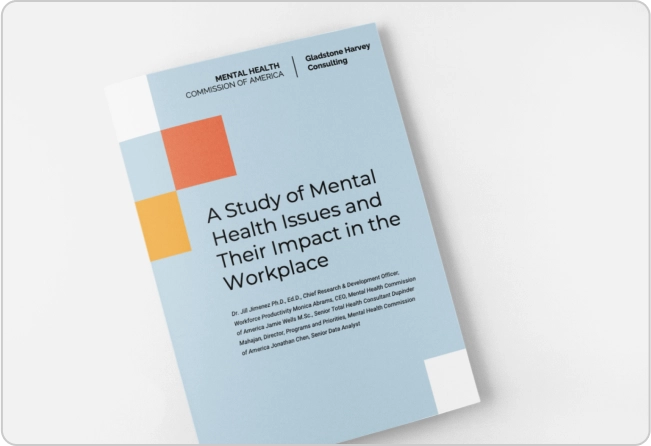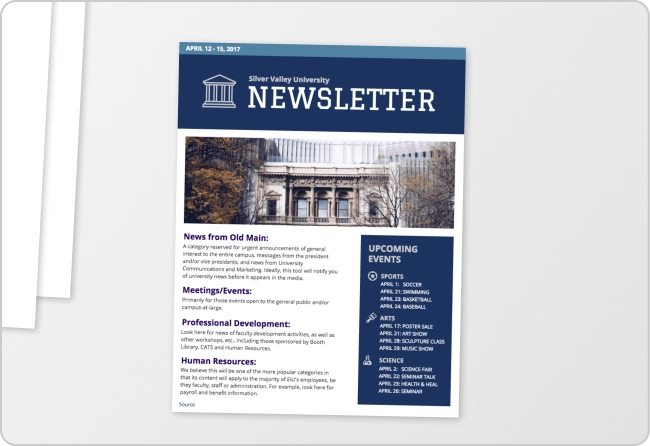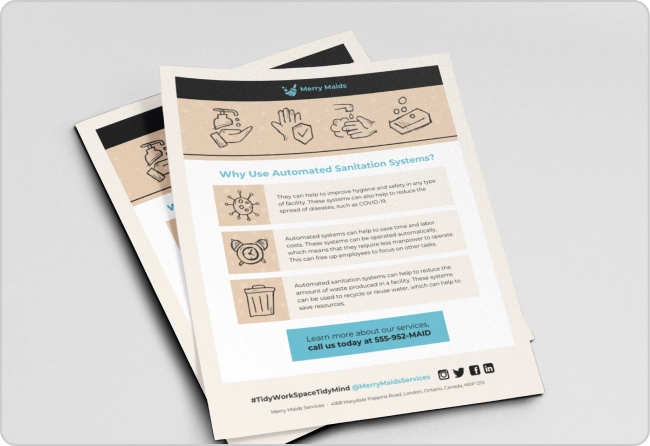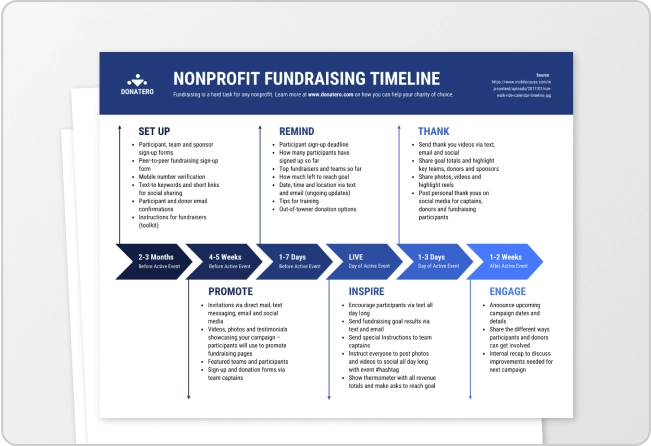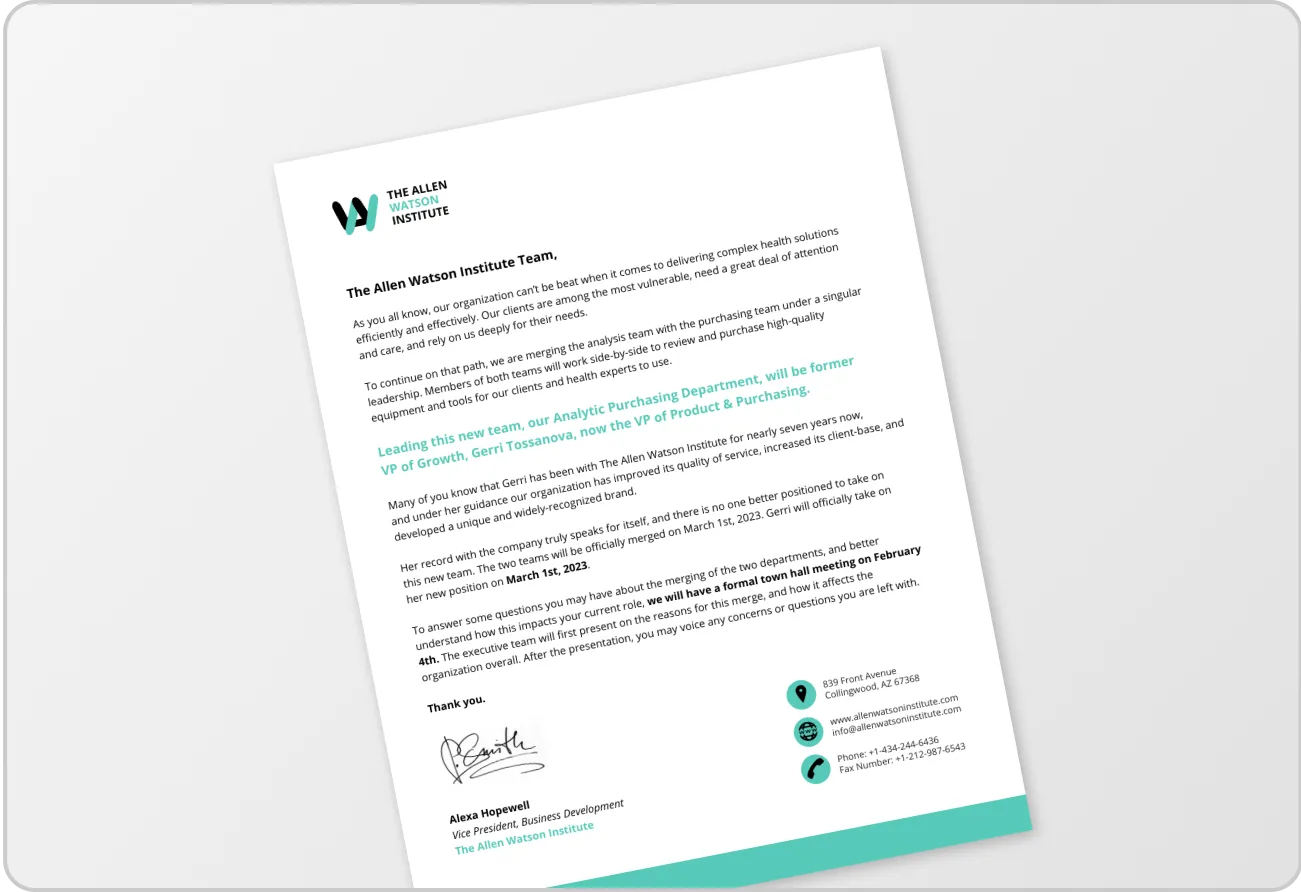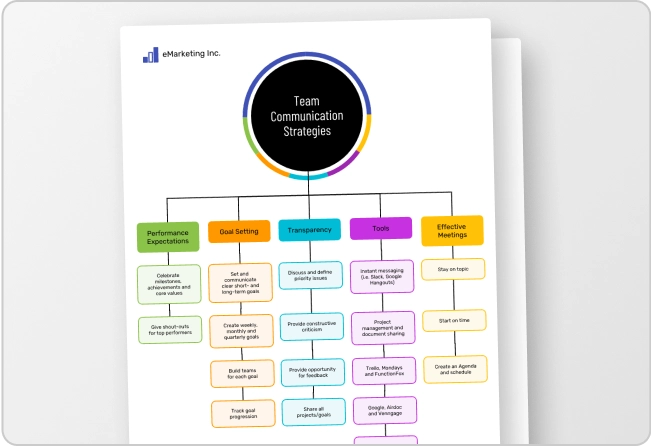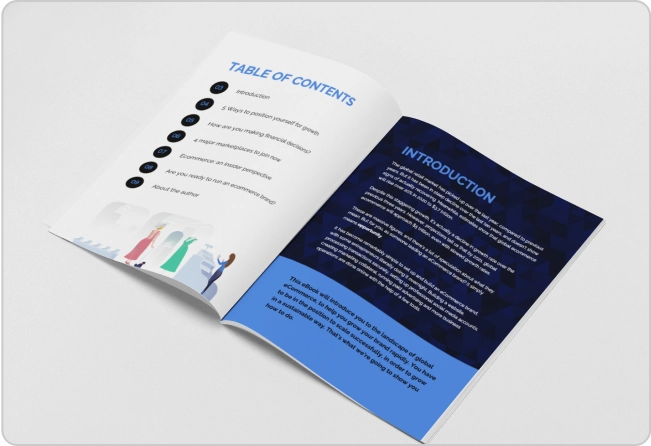
New year, new me. It’s the mantra we all love or at least intend to follow every year. Whether or not you stick to it personally, it’s certainly playing out in the design world. Old design trends from 2024, like heatmapping, are fading away, while fresh ones, like 3D design and retro psychedelic, are coming into the spotlight.
But just like us, design isn’t ready to ditch all its old quirks yet—some 2024 design trends like scrapbooking and bold typography are here to stay. AI is also reshaping how these trends come to life. From auto-generating layouts to assisting with brand visuals, AI design tools are giving designers new ways to work smarter and faster.
What do these shifts mean for the designers? Let’s find out.
Graphic design trends that are here to stay:
- AI-enhanced design practices
- Accessible and inclusive designs
- Digital scrapbooking
- Minimalist maximalism
- High contrast and bold typography
New graphic design trends in 2025:
- Dynamic branding and personalization
- Retro psychedelic
- Zero-waste design
- 3D objects and motion
- AR and VR
1. AI-enhanced design practices
Think AI will steal your design mojo? Think again. In 2025, AI is shaping up to be every designer’s ultimate wingman, more like a creative co-pilot than a competitor.
Imagine this: software that understands your design intent, suggests AI color palettes based on your audience, and even builds mood boards inspired by your favorite artists. The goal isn’t to replace your creativity, it’s to supercharge it.
According to Adobe’s 2025 State of Creativity Report, 62% of designers now use AI in at least three parts of their workflow, from ideation to execution.
Here are some of the best ways companies will use AI for design in 2025:
- Rapid prototyping: Generative AI tools can turn rough sketches or prompts into polished wireframes. These tools analyze user inputs, current design trends, and past performance to craft layouts optimized for both aesthetics and usability.
- AI design assistants: Moving beyond writing help, AI will act as your second pair of eyes—offering instant feedback, flagging inconsistencies, and recommending design improvements aligned with current best practices or market trends.
- Motion graphics made easy: AI can now generate intricate animations from simple text prompts. This makes it easier to A/B test dynamic visuals for different campaigns or rapidly adapt motion graphics to fit your brand voice.
- Photorealistic visuals: Brands like Klarna are using AI to generate hyper-realistic marketing imagery, cutting down production time while maintaining visual quality.
- Smarter UX decisions: Expect AI-driven UX decisions to become the norm. Designers will test layouts, interactions, and user journeys faster and more efficiently using AI-powered A/B testing and real-time data feedback.

Source: Adweek
Here at Venngage, we also have our very own best friend for designing AI images. Introducing Venngage’s AI Muse, an AI-enhanced design suite that helps you create AI infographics, brochures, posters, logos, book covers, resumes and many more designs.
Want to create a poster for your company’s annual meeting? Just type the prompt and you’ll get an event poster ready in a few seconds.
Moreover, tools like automated image resizing, AI Image Generator, background removal and color correction will free you from tedious tasks, letting you focus on the big picture: conception, ideation and the human touch that makes good design great.
2. Accessible and inclusive designs
Sure, your design might look stunning—the colors, the layout, the branding, all on point. But if some users can’t engage with it fully, what’s the real impact? Accessible design and inclusion are no longer optional—they’re essential for reaching and respecting your entire audience.
2025 is shaping up to be the year of proactive accessibility. According to the State of Digital Accessibility Report by LevelAccess, 89% of organizations report better user experience thanks to digital accessibility improvements.
Designers are leaning into palettes and layouts that meet Web Content Accessibility Guidelines (WCAG), ensuring visibility for users with color blindness. Expect more high-contrast pairings, like white text over deep blues or purples, to make sure critical content stands out for everyone.
But accessibility isn’t just about colors. It’s about representation, too. Designers are increasingly including visuals that reflect a broader spectrum of races, ethnicities, genders, abilities and body types. Google’s updated emoji library now offers diverse skin tones, hairstyles and gender expressions. Scope, a UK-based disability charity, has also contributed 18 new emojis representing people with disabilities and Paralympic sports.
This kind of inclusive visual storytelling builds stronger emotional connections and a better user experience for all.
Checklist: Accessible Design Basics
- ✅ Font sizes are 16px or larger
- ✅ Minimum 4.5:1 contrast ratio between text and background
- ✅ Descriptive alt tags for all images
- ✅ Full support for keyboard navigation
These small but critical details make your designs not just beautiful but truly usable by everyone.

Source: CBC
Looking for tools to create accessible designs? Venngage’s Accessible PDF Maker comes in handy. It auto-tags headings, checks color contrast ratio and automatically generates image alt text. You can also use the Visual Simulator to check how your designs will appear to people with visual impairments.
That’s not it! You can also explore Venngage’s Accessible Templates which are designed to be both visually appealing and easy to read. These templates enhance readability and accessibility, often using high contrast, clear typography and simplified design elements.
You can also use Venngage’s Accessibility Tools to test your designs for accessibility and find accessible color palettes with our Accessible Color Palette Generator.
3. Digital scrapbooking
Ah the joy of sifting through a childhood scrapbook overflowing with memories, textures and handwritten notes.
Well, that nostalgic charm is about to infuse graphic designs in 2025. Imagine a website adorned with polaroid-inspired textures, its text penned in a whimsical, hand-drawn font. Or picture a brochure layered with vintage ephemera, each element echoing the tactile joy of physical memories.
This trend isn’t just about aesthetics; it’s about evoking emotions, fostering connections and inviting you to peek into the designer’s personal scrapbook of inspiration.
Kiehl’s incorporates scrapbooking flair in their packaging and design. The skincare brand frequently adds vintage botanical drawings and handwritten labels into their packaging, giving it a nostalgic scrapbook charm.

Source: Domestika.org
4. Minimalist maximalism
Overrated color schemes and bold patterns, or neutral tones for a calming effect — which one would you pick? Well, you don’t have to choose between maximalism or minimalist designs anymore. To navigate this balance, it’s time to find a graphic design partner who understands the 2025 trend of blending the simplicity of minimalism with the power of bold visuals.
This trend is called minimalist maximalism. The design foundation remains simple; using lots of white space, clear typography and restrained color schemes combined with intricate patterns, intense colors or unexpected textures.
Puma’s marketing campaign is a perfect example of the minimalist maximalism trend. The text “FOREVER. FASTER.” uses large, clean and bold typography, creating a strong visual impact (typical of maximalism). The blurred background simplifies the scene (a hallmark of minimalism), while keeping the focus on the subject and message.

Source: Puma
5. High contrast and bold typography
Bold is back, but not just for show. Designers are leaning into high-contrast visuals and impactful type to create clarity, drama and instant recognition. This isn’t just about accessibility anymore, it’s about designing for presence in an overstimulated digital world.
Apple’s marketing for the Series 8 Watch nailed this look: oversized sans-serif typography in vibrant colors on deep black backgrounds—modern, dynamic, and unmistakably clear.

Source: Apple
Want to bring the same clarity and punch to your designs? Try these high-contrast font pairings:
- Playfair Display + Source Sans Pro – A timeless serif and sans-serif combo for editorial flair and readability
- Montserrat Black + Roboto – Bold headlines paired with a clean, approachable body font
- Oswald + Lato – Strong and structured meets soft and friendly
- Bebas Neue + Open Sans – All-caps drama with versatile, easy-to-read support
- Anton + Nunito – Heavyweight attention-grabber backed by a rounded, humanist type
- Abril Fatface + Work Sans – High-impact display meets modern minimalism
These pairings help create visual hierarchy, maintain readability, and keep your audience engaged, no matter the screen or context.
6. Dynamic branding and personalization
Dynamic branding and personalized design are becoming essential strategies for brands aiming to boost user engagement and loyalty. Rather than offering one-size-fits-all visuals, businesses are now using data-driven insights to tailor the design experience to each individual user.
Personalization works by analyzing user behavior, such as browsing history, interaction patterns or account activity and using that data to deliver targeted visuals, layouts and content. This approach creates relevance, increases emotional connection and builds trust with the user.
According to McKinsey, companies that implement advanced personalization see up to 40% higher revenue growth compared to those that don’t. Personalized designs and custom data visualizations enhances user experience, keeps audiences engaged longer and significantly improves conversion rates.
A strong example of this in action is Cleve.ai’s LinkedIn Unwrapped 2024. By collecting data from a user’s LinkedIn activity—such as top posts, milestones and interactions—Cleve.ai generates a unique, visually rich report for each person. This personalized design not only blends dynamic content with personalized design but also encourages sharing, engagement and brand recall.

Source: Cleve.ai
In 2025, expect to see:
- Real-time data visualizations customized for each user
- Adaptive layouts and visuals based on location, behavior or preferences
- Interactive reports and dashboards that feel personalized and purposeful
This move toward dynamic, user-centered design isn’t just a trend, it reflects a deeper shift toward creating meaningful, relevant digital experiences. Brands that adopt these practices position themselves as both innovative and customer-first.
Venngage’s Travel Wrapped also uses dynamic branding and personalization to create a tailored visual story for your expeditions. All you have to do is enter the names of the places you visited and your images. Our AI tool will generate a stunning, personalized infographic showing your unique travel experiences.
7. Retro psychedelic
Retro designs are making comeback in 2025, hitting a fresh wave of nostalgia. Here’s the fun part — they are combined with psychedelic art, inspired by the 1960s.
This means you’ll see more designs with:
- Vibrant colors like bright pink, yellow and orange
- Abstract and fluid visuals
- Multiple layers of patterns, images and textures
- Hand-drawn or wavy typography
All these elements offer a sense of depth and complexity to designs.

Source: The Guardian
8. Zero-waste design
We all want to create stunning designs with unique visuals and innovative layouts. But here’s the problem — both traditional and digital graphic design techniques impact the environment.
Creating visual materials like advertisements, posters and digital assets lead to carbon emissions. For instance, crafting 3D designs or using rendering tools requires high processing power, which consumes substantial energy. Additionally, sharing designs via emails and other digital platforms generates e-waste.
That’s why, in 2025, the focus is on zero-waste design practices. And rightly so! This trend involves eliminating waste through conscious design practices, such as:
- Modular designing: You can create flexible, reusable design components that can be easily adapted across multiple projects. For example, a website banner might use the full logo and tagline with a large image, while the Instagram post uses the same logo block, reduced in size and paired with a cropped version of the image and minimal text.
- Visual storytelling: This practice involves conveying impactful narratives with the least amount of resources. It means simplifying designs, using minimal yet effective visuals and ensuring every element in the design has a clear purpose.
- Print on-demand: Instead of mass-producing physical designs like posters, catalogs, custom clothing or promotional materials, designers can embrace print-on-demand solutions like Printful or Printify. This avoids overproduction and reduces waste generated from unused materials.
Zero-waste design is all about transforming the entire design workflow to reduce environmental footprint.
9. 3D objects and motion
In 2025, 3D designs and motion graphics will take center stage. Brands will focus heavily on hyper-realistic product images, refined textures and captivating animations. While 3D billboard campaigns — like the Super Nintendo’s — have already turned heads, we’ll see an even bigger wave of 3D product visualizations, 3D logos and interactive web visuals.

Source: My Nintendo News
3D design adds depth, realism and tactile qualities to visuals, creating more immersive and engaging experiences for users. But it won’t stop there. 3D design is set to expand into infographics, posters and brochures. These formats will benefit from 3D’s ability to tell stories more vividly and multi-dimensionally.
For instance, take a look at Venngage’s 3D invitation template. It’s a great example of how 3D elements can elevate even traditional formats, making them more eye-catching and interactive.
10. AR and VR
The Augmented Reality (AR) and Virtual Reality (VR) craze has progressed over the years and has now become an indelible part of mainstream marketing. The reason for its growing popularity is simple — increasing consumer demand for immersive experiences.
We believe that this physical embodiment of one possible reality is really important because we are not just rational minds, thinking with our brains. We are thinking through our bodies and it is important to have that embodied experience so that we are perhaps able to make more informed decisions about the future. So if we are able to get people to pre-experience the future, then they are able to store those experiences as memories. That’s where there’s an interesting blur between the physical and the digital.
Anab Jain, Co-Founder and Director at Superflux
Designers are creating spatial designs and virtual spaces for the audience where users can move, explore and interact, turning spaces into storytelling tools. For example, Pizza Hut added QR codes to its delivery boxes that allow people to play Pac-Man with AR technology.

Source: Business Insider
IKEA’s VR showroom is another excellent example of creating surreal digital experiences for the target audience. The intuitive user interface (UI) allows users to visualize how different IKEA items would appear in their living room or kitchen. You can swatch living room colors, add lights to create an ambiance and try different fabrics.

Source: IKEA
The narrative is shifting from storytelling to storydoing, a marketing strategy that prompts users to interact with the brand’s story by creating a unique experience for them.
In 2025, we’ll likely see brands using AR and VR designs for:
- Product visualization
- Social media filters
- Virtual try-ons
- AR-powered packaging
- Immersive billboards
- Interactive catalogs and food menus
- Animated book covers
That’s not it! In 2025, we’ll also witness AI integration into AR and VR designs. AI-powered video integration tools like Sora help businesses create realistic virtual environments with simple text prompts.
For example, a designer can input a description of a virtual city and Sora can generate the architecture, streets and textures, speeding up development time. Advanced machine learning techniques will enhance AR and VR experiences by improving gesture recognition and environmental understanding, creating more intuitive and responsive virtual interactions.
2025 graphic design trends FAQs
What are the top graphic design trends?
Key trends include AI-enhanced design workflows, high-contrast typography, dynamic personalization, inclusive visuals and a blend of minimalist and maximalist aesthetics.
How is AI transforming graphic design?
AI streamlines tasks like prototyping, image generation and layout suggestions. It also enables real-time personalization and improves design decisions through data analysis.
Why is accessibility important in graphic design today?
Accessible design ensures that everyone, including people with disabilities, can engage with content. It also improves user experience and is increasingly a legal and ethical standard for digital content.
What is minimalist maximalism in design?
Minimalist maximalism is the balance between simplicity and bold expression. Think clean layouts with oversized type, vibrant colors or strong visuals that still feel curated and intentional.
How can designers reduce digital waste through design?
By optimizing image sizes, choosing sustainable color schemes (like dark mode) and avoiding unnecessary animations, designers can reduce energy consumption and create more eco-conscious digital products.
Stay on top of graphic design trends with Venngage
2025 design trends are focusing on personalization, inclusivity and sustainability. Brands are creating dynamic, tailored experiences with data-driven insights, while ensuring accessibility through high-contrast text and adaptable layouts. Zero-waste design principles are gaining traction, with modular systems and efficient visual storytelling leading the way.
Expect a mix of nostalgic and modern aesthetics that engage users through immersive, interactive content. Venngage supports these trends by offering customizable templates for personalized designs, accessible features for inclusivity, modular systems for sustainable content and tools for clear, efficient visual storytelling.

































